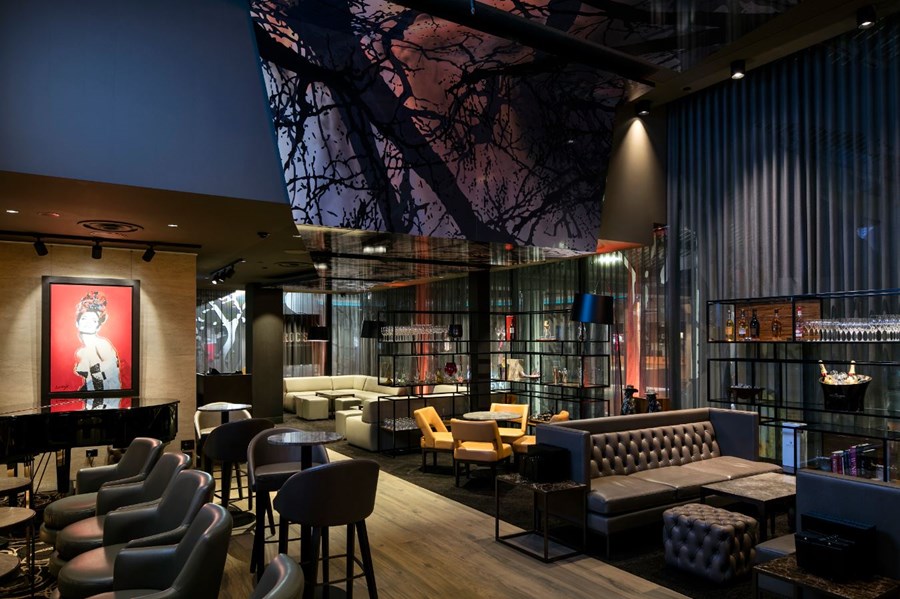On Monday 20th June the AES Melbourne Section finally returned to our old meeting haunt of the SAE Institute lecture theatre, where we welcomed Vastigo’s Joe Hayes to demonstrate his DaS (Diffusion at Source) AuReality loudspeakers.
In October last year, Joe introduced us to his concept of the DaS loudspeaker algorithm which provides a listening experience unshackled from the room’s acoustics and free of sweet-spot limitations. A full report on that presentation can be found at https://www.aesmelbourne.org.au/mtg-rpt-oct2021/
This time around, Joe gave us the opportunity to hear the results of his work.
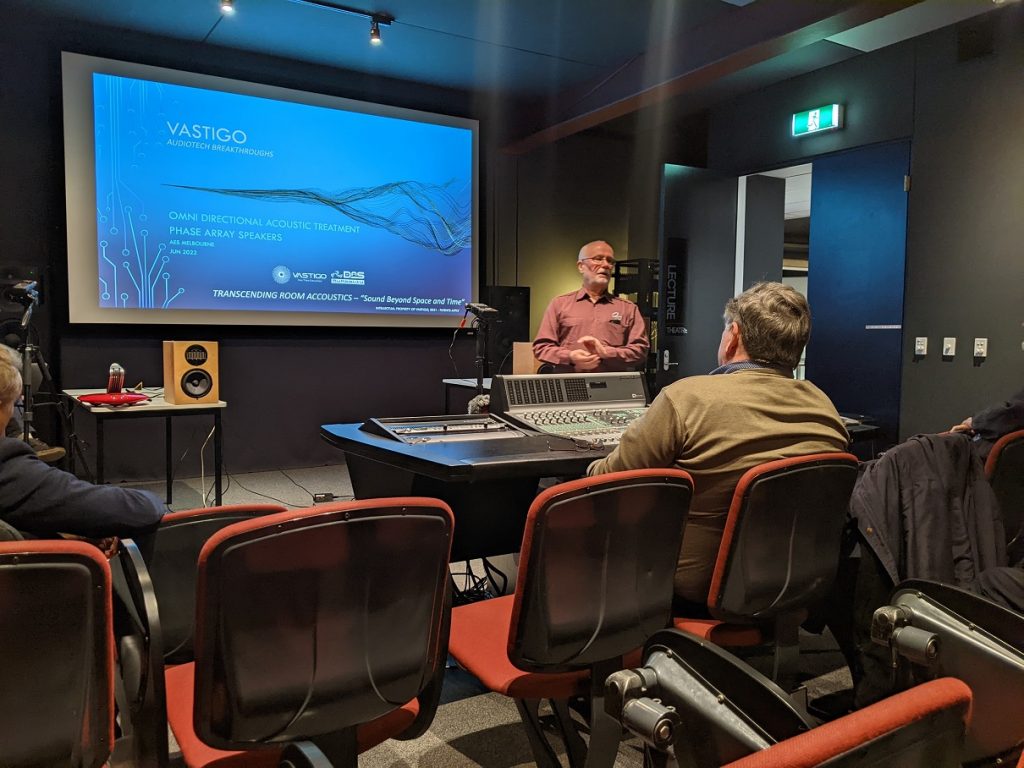
Joe started the evening by giving us a recap of his work, describing the development of the concepts behind DaS AuReality and giving us an update on the work he is doing.
He showed speaker response curves – displaying the omnidirectional characteristics of his configuration up to 10kHz, making them useful for playback and monitoring in less-than-ideal acoustic environments. He used graphics to demonstrate that it is a point-source technology, but with a time delay at the source which provides diffusion – “Diffusion at Source”.
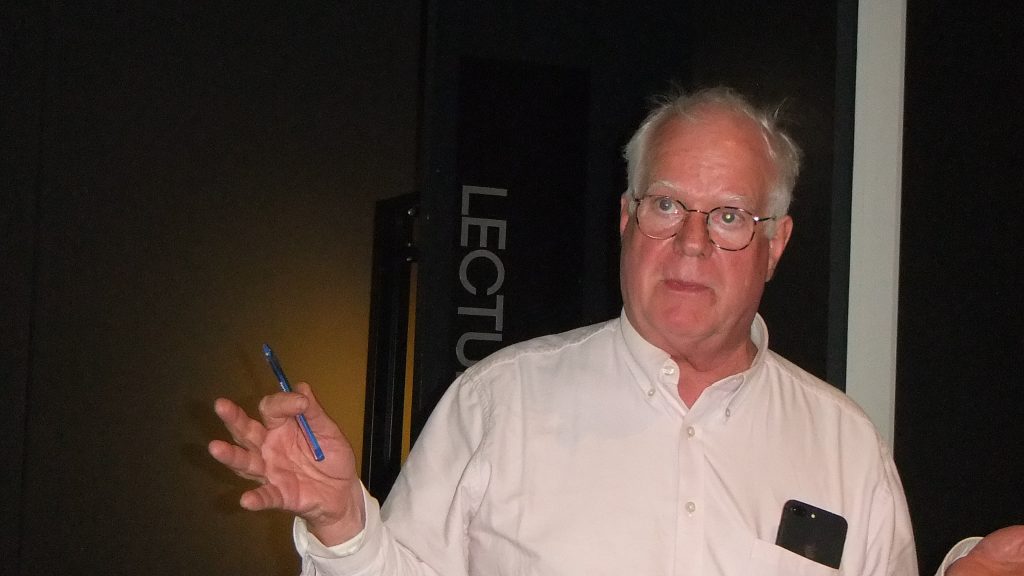
Then he showed correlograms of the correlated energy of a conventional loudspeaker versus the Das AuReality loudspeakers.
At the end of his recap, Joe described the multiple small 13W(RMS) amplifiers used to drive the loudspeaker array, devices so small they can be integrated into the array assembly, only requiring a 24-volt power supply and an I2S digital audio input.
Following Joe’s introductory recap, the meeting enjoyed auditioning his loudspeaker designs using a variety of source material, ranging from his recordings of nature sounds and an aircraft fly-past through to a range of musical and vocal performances.
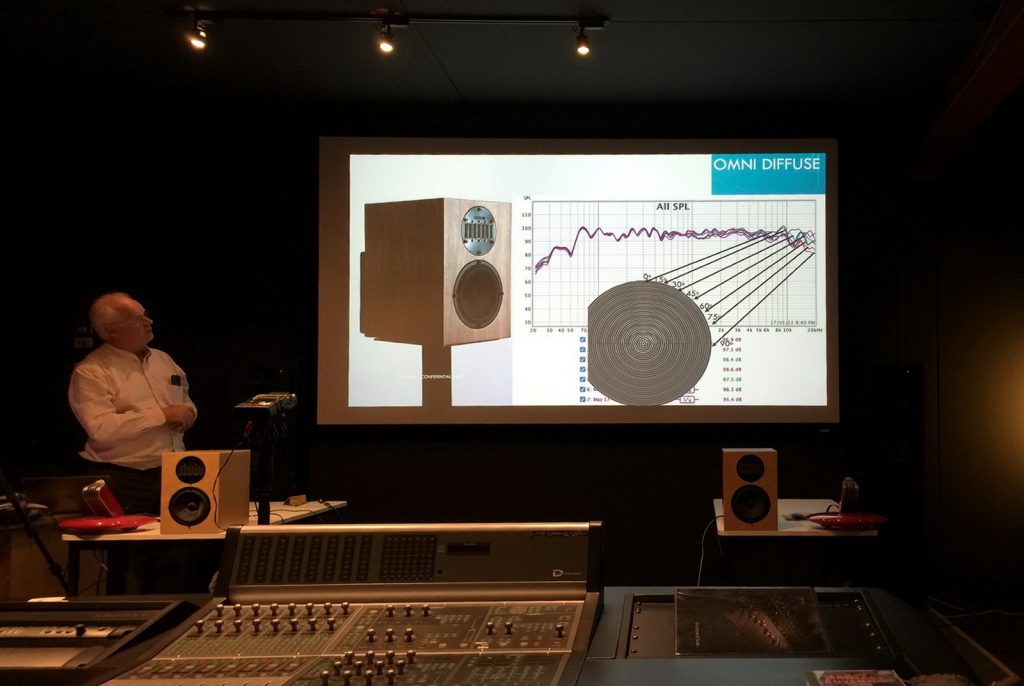
This critical listening involved many in the audience moving around the room – both in front of and behind the loudspeakers – to identify the omnidirectional nature of the sound-field, as well as the ubiquity of the sweet spot.
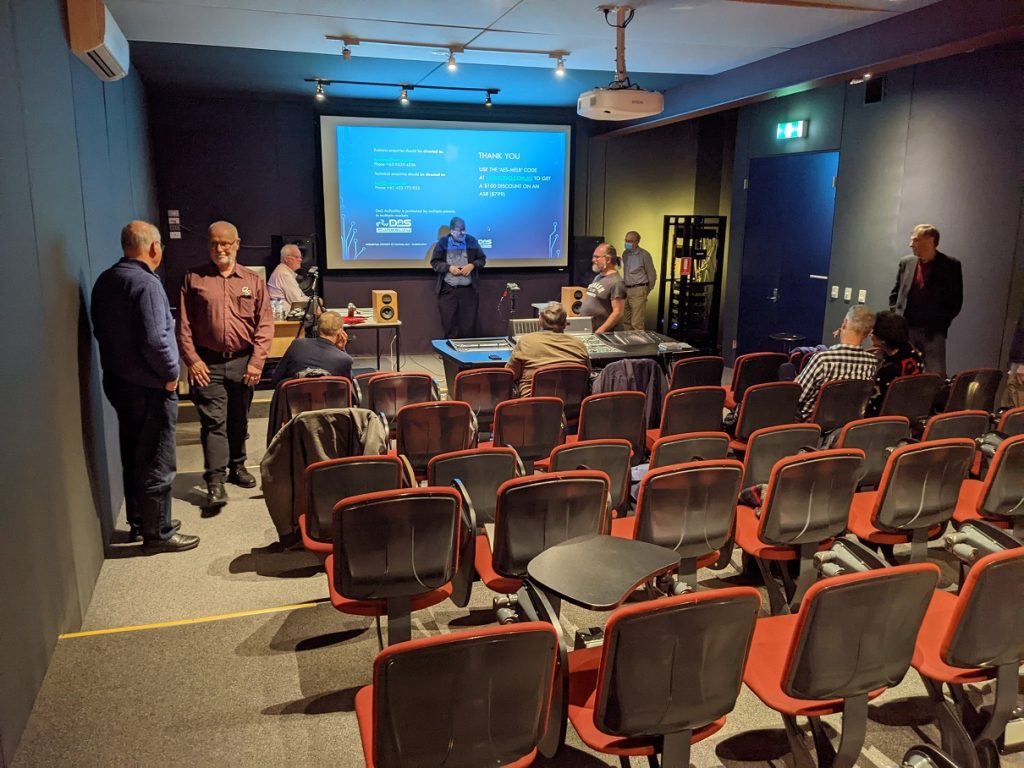
the omni-directionality and sweet-spot diffusion
We thank Joe for his time and the work that he put into arranging this demonstration.
We have matched an audio recording of Joe’s preamble with his slides in this video:
We also thank the SAE for the use of their excellent facilities, and our own Graham Haynes for the audio recording, as well as Rod Staples and David Hudson for their photos of the night.


